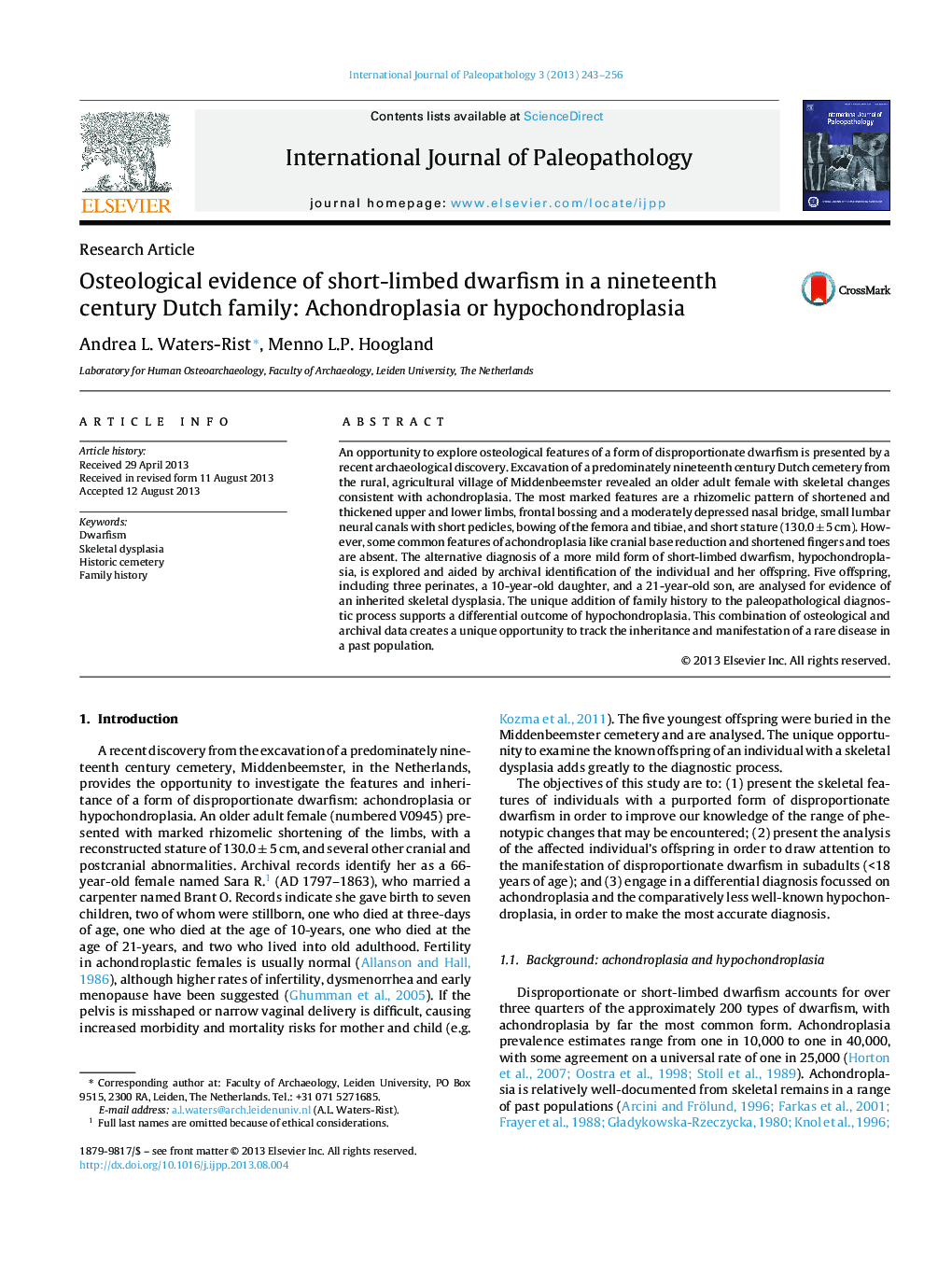| کد مقاله | کد نشریه | سال انتشار | مقاله انگلیسی | نسخه تمام متن |
|---|---|---|---|---|
| 101390 | 1422388 | 2013 | 14 صفحه PDF | دانلود رایگان |

• Manifestation of disproportionate dwarfism in an adult female and five offspring.
• Differential focused on achondroplasia and the less well-known hypochondroplasia.
• Illustration of phenotypic differences between subadults and adults with dwarfism.
• Usefulness of changes besides limb bone shortening, i.e. lumbar vertebrae pedicles.
• Probable first case of hypochondroplasia in the paleopathology record.
An opportunity to explore osteological features of a form of disproportionate dwarfism is presented by a recent archaeological discovery. Excavation of a predominately nineteenth century Dutch cemetery from the rural, agricultural village of Middenbeemster revealed an older adult female with skeletal changes consistent with achondroplasia. The most marked features are a rhizomelic pattern of shortened and thickened upper and lower limbs, frontal bossing and a moderately depressed nasal bridge, small lumbar neural canals with short pedicles, bowing of the femora and tibiae, and short stature (130.0 ± 5 cm). However, some common features of achondroplasia like cranial base reduction and shortened fingers and toes are absent. The alternative diagnosis of a more mild form of short-limbed dwarfism, hypochondroplasia, is explored and aided by archival identification of the individual and her offspring. Five offspring, including three perinates, a 10-year-old daughter, and a 21-year-old son, are analysed for evidence of an inherited skeletal dysplasia. The unique addition of family history to the paleopathological diagnostic process supports a differential outcome of hypochondroplasia. This combination of osteological and archival data creates a unique opportunity to track the inheritance and manifestation of a rare disease in a past population.
Journal: International Journal of Paleopathology - Volume 3, Issue 4, December 2013, Pages 243–256